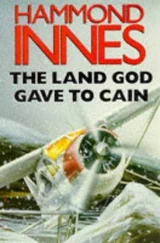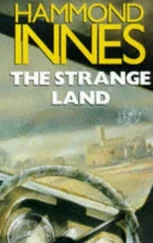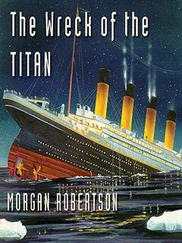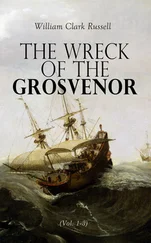Hammond Innes - The Wreck Of The Mary Deare
Здесь есть возможность читать онлайн «Hammond Innes - The Wreck Of The Mary Deare» весь текст электронной книги совершенно бесплатно (целиком полную версию без сокращений). В некоторых случаях можно слушать аудио, скачать через торрент в формате fb2 и присутствует краткое содержание. Жанр: Морские приключения, на английском языке. Описание произведения, (предисловие) а так же отзывы посетителей доступны на портале библиотеки ЛибКат.
- Название:The Wreck Of The Mary Deare
- Автор:
- Жанр:
- Год:неизвестен
- ISBN:нет данных
- Рейтинг книги:3 / 5. Голосов: 1
-
Избранное:Добавить в избранное
- Отзывы:
-
Ваша оценка:
- 60
- 1
- 2
- 3
- 4
- 5
The Wreck Of The Mary Deare: краткое содержание, описание и аннотация
Предлагаем к чтению аннотацию, описание, краткое содержание или предисловие (зависит от того, что написал сам автор книги «The Wreck Of The Mary Deare»). Если вы не нашли необходимую информацию о книге — напишите в комментариях, мы постараемся отыскать её.
The Wreck Of The Mary Deare — читать онлайн бесплатно полную книгу (весь текст) целиком
Ниже представлен текст книги, разбитый по страницам. Система сохранения места последней прочитанной страницы, позволяет с удобством читать онлайн бесплатно книгу «The Wreck Of The Mary Deare», без необходимости каждый раз заново искать на чём Вы остановились. Поставьте закладку, и сможете в любой момент перейти на страницу, на которой закончили чтение.
Интервал:
Закладка:
I followed him up and found him in the chartroom, poring over a big book of Admiralty tide-tables. He looked up and for the first time I saw him as a leader, all the fatigue wiped out, the drink evaporated. ‘There’s just a chance,’ he said. ‘If we can keep her afloat, we might do it. It means working down in that stokehold — working like you’ve never worked in your life before; turn-and-turn about — the stokehold and the wheelhouse.’ He seized hold of my arm. ‘Come on! Let’s see if we’ve got sufficient head of steam to move the engines.’ A wave hit the side of the ship. Sheets of water fell with a crash, sluicing into the wheelhouse through the broken doorway leading to the port wing of the bridge. Out of the tail of my eye I saw water thundering green across the half-submerged bows. And then I was following him down the ladder again into the body of the ship and he was shouting: ‘By God, man, I might cheat them yet.’ And his face, caught in the light of my torch as it was turned momentarily up to me, was filled with a sort of crazy vitality.
CHAPTER THREE
The darkness of the engine-room was warm with the smell of hot oil and there was the hissing sound of steam escaping, so that the place seemed no longer dead. In my haste I let go at the bottom of the last ladder and was pitched a dozen feet across the engine-room deck, fetching up against a steel rail. There was a prolonged hiss of steam as I stood there, gasping for breath, and the pistons moved, thrusting their arms against the gleaming metal of the crankshaft, turning it — slowly at first, and then faster and faster so that all the metal parts gleamed in the light of my torch and the engines took on that steady, reassuring thump-thump of vitality and power. The hum of a dynamo started and the lights began to glow. The humming became louder, the lights brighter, and then abruptly they snapped full on. Brass and steelwork gleamed. The whole lit cavern of the engine-room was alive with sound.
Patch was standing on the engineer officer’s control platform. I staggered down the catwalk between the two big reciprocators. ‘The engines!’ I shouted at him. ‘The engines are going!’ I was beside myself with excitement. For that one moment I thought we could steam straight into a port.
But he was already shutting off the steam, and the beat of the engines slowed and then stopped with a final hiss. ‘Don’t stand there,’ he said to me. ‘Start stoking. We want all the steam we can get.’ For the first time he looked like a man in control of the situation.
But stoking was more difficult now; dangerous, too. The movements of the ship were unpredictable. One moment I would be flinging a shovelful of coal high up against the thrust of gravity, the next I would be pitched towards the flaming mouth of the furnace and the coal would seem to have no weight at all as it left the shovel.
I don’t know how long I was working there alone before he joined me. It seemed a long time. I didn’t see him enter. All my mind was concentrated on the coal and that gaping furnace door, concentrated on gauging the pitch of the ship, avoiding being flung against the red-hot fire. I felt a hand on my arm and I looked up to find him standing over me. I straightened up and faced him, panting, with the sweat pouring off my body. ‘I’ve got the pumps going,’ he said.
I nodded, too short of breath to waste it in speech.
‘I’ve just been up to the bridge,’ he went on. ‘Half the time the bows are right under. Any moment that bulkhead may go. Do you think you could hear the engine-room telegraph from in here?’
‘I don’t know,’ I said. ‘I expect so.’
He took me through into the engine-room then and showed me the engine controls and the voice pipe that connected with the bridge. ‘I’ll go up to the bridge now,’ he said. ‘You go back to the boiler-room and start stoking. I’ll give you a ring on the engine-room telegraph. If you don’t hear it after two minutes come to the voice pipe. Okay?’
I nodded and he went clambering up the ladder, whilst I returned to the stokehold. Even in that short time my arms and back had stiffened. I had to force myself to start shovelling again. I was beginning to get very tired and I wondered how long we could keep this up. Faint above the roar of the furnace and the sounds of the engine-room came the jangling of the bridge telegraph. I flung the furnace door to and went through to the engineers’ control platform. The pointer stood at Full Ahead. I spun the control wheel, opening up the steam valves, and for the first time I understood the thrill and pride an engineer officer must feel; the hiss of steam, the pistons moving and the engines taking up a steady, pulsating beat, vibrant with power. The heart of the ship had come alive, and it was I who had made it alive. It was satisfying.
Back in the stokehold the shovel felt strangely light. I barely noticed the aching of my arms. Confidence and the will to fight back had returned. I was suddenly full of energy.
It worked out that about every ten minutes or so the engines had to be run; it took about three minutes to get her stern-on again. Those three minutes produced a big drop in the pressure gauge. Only by keeping the furnace full and roaring could that pressure be built up again in time to meet the next demand from the bridge. At 15.30 he called me up to take over the wheel. ‘Watch the spindrift,’ he said. ‘That will tell you the wind direction. Lay her exactly along the direction of the wind. If you’re a fraction out the stern will swing almost immediately. And have full rudder on from the moment you order me to start the engines — and don’t forget she’ll carry way for a good five minutes after the engines have stopped.’ He left me then and I was alone at the wheel.
It was a welcome relief to be able to stand there with nothing heavier than the wheel to shift. But whereas in the stokehold with the roar of the furnace and the periodic sound of the engines, there had been a sense of security and normality, here I was face to face with the reality of |he situation. A grim half light showed the bows so badly down in the water that they barely lifted above the marching wave tops even when running dead before the wind, and, as soon as the ship swung and I had to use the engines, the whole deck for’ard of the bridge became a seething welter of water. The sweat cooled on my body, an ice-cold, clammy coating to my skin, and I began to shiver. I found a duffle coat in the chartroom and put it on. A new position had been marked in on the chart. We were lying just about halfway between the Roches Douvres and the Minkies. The congested area of submerged reefs was looming rapidly nearer.
At 16.30 he relieved me. He stood for a moment looking out across the bows into the faded daylight of that wretched, gale-swept scene. His face and neck glistened with sweat and his eyes were deep-sunk in their sockets, all the bone formation of his face standing out hard and sharp. ‘Come through into the chartroom a minute,’ he said, taking hold of my arm — whether out of a need for the companionship of physical contact or to steady himself against the roll of the ship, I don’t know. ‘The wind is westerly now,’ he said, pointing to our position on the chart. ‘It will probably back farther into the southwest. If we’re not careful we’re going to be driven slap into the middle of the Minkies. What we’ve got to do now is to inch our way to the south’ard. Every time we run the engines we’ve got to make full use of them.’
I nodded. ‘Where are you heading for — St Malo?’
He looked at me. ‘I’m not heading anywhere,’ he said. ‘I’m just trying to keep afloat.’ He hesitated and then added, ‘In four hours the tide will start running against us. It’ll be wind over tide then and throughout most of the night. It’ll kick up a hell of a sea.’
Читать дальшеИнтервал:
Закладка:
Похожие книги на «The Wreck Of The Mary Deare»
Представляем Вашему вниманию похожие книги на «The Wreck Of The Mary Deare» списком для выбора. Мы отобрали схожую по названию и смыслу литературу в надежде предоставить читателям больше вариантов отыскать новые, интересные, ещё непрочитанные произведения.
Обсуждение, отзывы о книге «The Wreck Of The Mary Deare» и просто собственные мнения читателей. Оставьте ваши комментарии, напишите, что Вы думаете о произведении, его смысле или главных героях. Укажите что конкретно понравилось, а что нет, и почему Вы так считаете.












